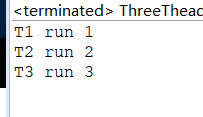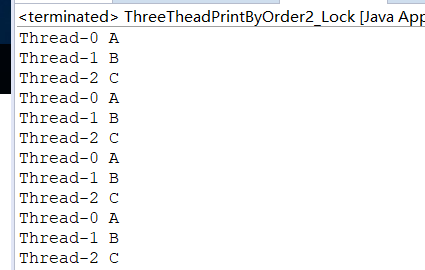一、join介绍
Thead.join()函数在使用后,会挂起调用线程,直到被调用线程结束执行,调用线程才会继续执行。源码中调用join后,方法会一直检测要join()的线程是否存活(isAlive()方法),直到线程执行完成后,调用线程的this.notifyAll()方法,才会回到刚刚挂起的主程序。基本操作如下:
public class Worker extends Thread { // 工作者名 private String name; // 工作时间 private long time; public Worker(String name, long time) { this.name = name; this.time = time; } @Override public void run() { // TODO 自动生成的方法存根 try { System.out.println(name + "开始工作"); Thread.sleep(time); System.out.println(name + "工作完成,耗费时间=" + time); } catch (InterruptedException e) { // TODO 自动生成的 catch 块 e.printStackTrace(); } } } public static void main(String[] args) throws InterruptedException { // TODO Auto-generated method stub Worker worker0 = new Worker("worker0", (long) (Math.random() * 1000)); Worker worker1 = new Worker("worker1", (long) (Math.random() * 1000 + 1000)); Worker worker2 = new Worker("worker2", (long) (Math.random() * 1000 + 2000)); worker1.start(); worker0.start(); worker1.join(); worker0.join(); System.out.println("准备工作就绪"); worker2.start(); }
结果如下:

二、join方式代码实现
有了上面的介绍很容易想到,三个线程顺序输出,让他们依次join(),按顺序等待执行就好了,代码如下:
public static void main(String[] args) { final Thread t1 = new Thread(new Runnable() { public void run() { System.out.println(Thread.currentThread().getName() + " run 1"); } }, "T1"); final Thread t2 = new Thread(new Runnable() { public void run() { try { t1.join(); System.out.println(Thread.currentThread().getName() + " run 2"); } catch (InterruptedException e) { e.printStackTrace(); } } }, "T2"); final Thread t3 = new Thread(new Runnable() { public void run() { try { t2.join(); System.out.println(Thread.currentThread().getName() + " run 3"); } catch (InterruptedException e) { e.printStackTrace(); } } }, "T3"); t1.start(); t2.start(); t3.start(); //方法二 // ExecutorService executor = Executors.newSingleThreadExecutor(); // executor.submit(t1); // executor.submit(t2); // executor.submit(t3); // executor.shutdown(); }
效果如图:

三、既然是多线程,自然也可以用加锁的方式实现,直接上代码:
package com.concurrency; import java.util.concurrent.locks.Lock; import java.util.concurrent.locks.ReentrantLock; public class ThreeTheadPrintByOrder2_Lock { public static void main(String[] args) { new ThreadA().start(); new ThreadB().start(); new ThreadC().start(); } private static Lock lock = new ReentrantLock(); private static int state = 0; static class ThreadA extends Thread { @Override public void run() { for (int i = 0; i < 10;) { lock.lock(); if (state % 3 == 0) { System.out.println(Thread.currentThread().getName() + " A"); state++; i++; } lock.unlock(); } } } static class ThreadB extends Thread { @Override public void run() { for (int i = 0; i < 10;) { lock.lock(); if (state % 3 == 1) { System.out.println(Thread.currentThread().getName() + " B"); state++; i++; } lock.unlock(); } } } static class ThreadC extends Thread { @Override public void run() { for (int i = 0; i < 10;) { lock.lock(); if (state % 3 == 2) { System.out.println(Thread.currentThread().getName() + " C"); state++; i++; } lock.unlock(); } } } }
效果如下:
